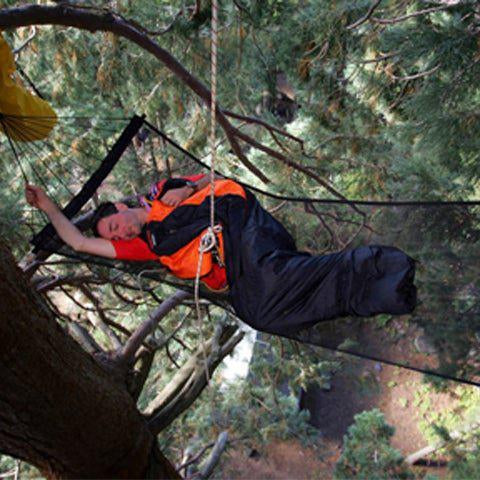The Humble History of The Hammock

We 21st-century humans like to think of ourselves as innovators, creative thinkers, imaginative individuals, and inventors, but when you compare our resources, materials, needs, knowledge and opportunities to people from 2000 B.C we fall way short. In fact, compared to them I’d even say we are a lazy bunch.
Think about it, can you imagine the kind of creative imagination it must have taken the citizens from that era to look at the “Hamack” tree, separate the bark from it and weave it into something that can not only suspend above ground but that can be tied on both ends AND hold the weight of a human body? That is a summarized version of how the Hammock (as we know it today), came into birth.
Let’s go back to the beginning:
Once upon a time, there were people who lived in Mexico called “Mayan” people (having originated from Yucatan), who decided to solve many problems namely sleeping, the burial of loved ones and space by taking the bark of a tree called the Hamack Tree and weaving this bark into a large piece of cloth. They then tied the ends of this cloth to 2 trees and slept in them. When it came to burying loved ones, these ends were tied to thick wooden poles and transported to burial sites on the shoulders of strong men.
This innovation was soon dubbed the “suspended beds”, as it hung above ground and as a result solved many insect and bug issues, amongst many others including health issues (for more on the benefits of a hammock click here).
Then fast forward to the fifteenth century a great traveller by the name of Christopher Columbus discovered these hanging beds and wrote in his journal (on 17 October 1492) about “...people were sleeping in nets between trees…” and in all his amazement decided to bring this creation with him back to Europe.
Thanks to this introduction and the generosity of the Europeans, hard-working sailors who were getting thrashed around on the harsh floors of their wooden ships, FINALLY had a soft, safe, durable and space-saving floating bed that swayed with the motion of the ocean, meaning less disturbance when they did get a chance to sleep. Sailors used canvas versions of Hammocks which meant better protection and sanitary sleeping conditions aboard their ships.
By this time Europe stopped using the Hamack tree bark as it was also becoming scarce and evolved into canvas and cotton fibres.
Did you know? In 1597, the United Kingdom’s Royal Navy officially adopted the hammock onboard their ships up until the 1950s when they were replaced with beds.
When did Hammocks become famous?
There was a company in South Carolina around the year 1889 that was the first to mass manufacture the Hammock and thanks to them, we all get to enjoy this piece of history as an evolution of leisure and not survival.
(By the way, the hammock is one of the few survivors of World War 1, World War 2, the Civil War and the Vietnam War, just putting it out there that Simply Hammocks Hammocks are just as durable).
This is when Hammocks started taking on a life of its own, gaining popularity amongst locals and not just sailors and island tribes. The wealthiest people of that time started using Hammocks as leisure beds and gave them more value, but their versatility didn’t end there, even Prisoners used Hammocks as sleeping cots to save space and prevent overcrowding.
Today the Hammock can be enjoyed in your garden tied between two trees as they were traditionally designed or suspended on its own wooden/ metal stand. It can be used as an office chair and comes in a variety of colours, styles, sizes, and functionalities.
Go get your piece of history and keep the legacy going so generations after our own can live better, happier, more comfortable lives as they camp, picnic, and just enjoy a life of leisure all from the comfort of a Humble Hammock.
Pick your style and have it your way, Happy Hammocks.
- Ari







